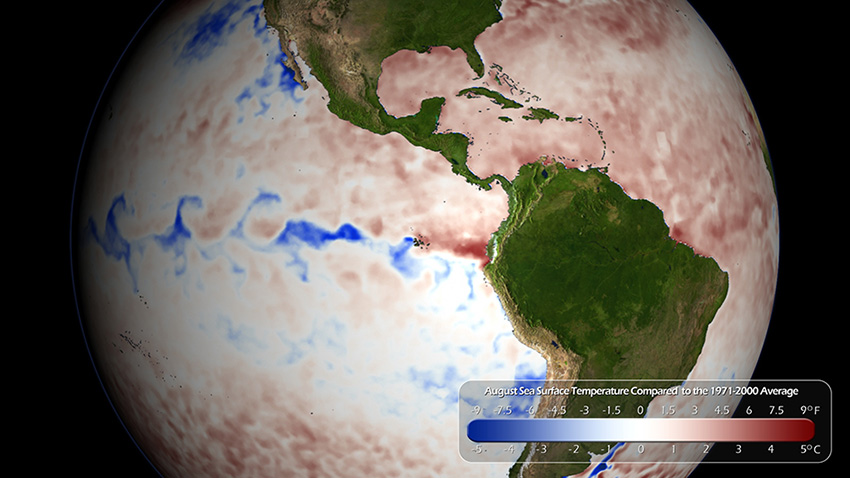Predicting the Impact of El Niño on Future Temperature Extremes
Accurate prediction of El Niño-Southern Oscillation is crucial for simulating extreme maximum temperature.

The Science
This study examines the impact of the El Niño-Southern Oscillation (ENSO) on temperature extremes for both observations and coupled climate model simulations, comparing the ability of two climate models to predict temperature extremes.
The Impact
Both models capture some aspects of the observed patterns; however, the fidelity of the ENSO simulation appears to be crucial for simulating the magnitude and sign of the extreme maximum temperature relationships. Understanding the mechanisms leading to these projected changes will enable better predictions of regional changes due to ENSO.
Summary
The recently developed observed gridded dataset of climate extremes indices shows marked contrasts in seasonal composites of the monthly maximum value of daily maximum temperatures during the cold and warm phases of ENSO. Extreme maximum temperatures are significantly cooler over Australia, southern Asia, Canada and South Africa during strong La Niña events compared to El Niño events and significantly warmer over the contiguous United States and southern South America. Two versions of the DOE-NSF Community Climate System Model (CCSM3 and CCSM4) are contrasted for their ability to capture these relationships given their very different simulations of ENSO. The CCSM3 ENSO simulation has a strong biennial frequency that is more narrowly confined along the equator than observations, while the CCSM4 ENSO simulation is more realistic in both frequency and pattern. While both models capture some aspects of the observed regional changes across the globe, the fidelity of the ENSO simulation appears to be crucial for simulating the magnitude and sign of the extreme maximum temperature relationships. Over the US in particular, the composite pattern of maximum temperature extremes with ENSO is opposite in sign for CCSM3 compared to observations while CCSM4 is much improved, capturing the observed increase in US maximum temperature extremes during La Niña with realistic amplitude, pattern and statistical significance. In a future emissions scenario of CCSM4, the contrast between maximum temperature extremes during El Niño and La Niña events strengthens over Australia whereas it weakens slightly over the US.
Contact
Dr. Julie M. Arblaster
Bureau of Meteorology
Melbourne, Australia
j.arblaster@bom.gov.au
Funding
Basic Research: DOE Office of Science, Office of Biological and Environmental Research
Publications
Arblaster, J. M. and L. V. Alexander, The impact of the El Niño Southern Oscillation on maximum temperature extremes, Geophys. Res. Lett. 39, L20702 (2012). [DOI: 10.1029/2012GL053409]
Highlight Categories
Performer: University
Additional: Collaborations , International Collaboration



